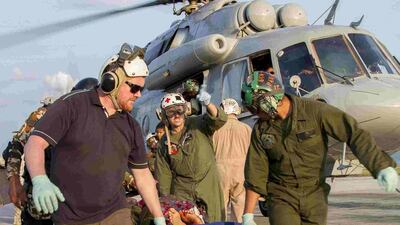Nobody who saw images of the devastation caused by Nepal’s earthquakes could have harboured any illusions about the colossal scale of the challenge ahead. With only one international airport and the few roads that reach deep into the mountains having been blocked by landslides, getting emergency aid to remote Himalayan villages was a daunting prospect.
However a week before the initial April 25 earthquake, more than 50 international experts met in Kathmandu for the latest of many conferences designed to plan for that exact scenario.
The international community also mobilised to help, providing search and rescue teams trained in recovering people trapped in collapsed buildings, medical help for survivors and both emergency supplies and also aircraft capable of delivering it to remote areas.
While a degree of disorganisation is both understandable and inevitable in the immediate aftermath of an event of this magnitude, the adequacy of the Nepalese government’s marshalling of the resources made available to it raises significant questions.
Examples that stand out are the three British Chinook cargo helicopters that stood unused for nearly three weeks at Chandigarh Air Force base in India before being stood down. A New Zealand urban search and rescue team with 10 tonnes of supplies also never made it to the country, at the government’s request.
With some remote villages still unreached by help and the pending arrival of the monsoon about to bring a new level of misery to communities that lost their homes, this kind of mismanagement cannot to be tolerated. Worse still, when combined with concerns about corrupt officials using this disaster to enrich themselves, it has the effect of inhibiting the public’s willingness to donate.
Nepal will need all the money it can get to cope with both the short and long term effects of these earthquakes. The inefficiency of the government’s response to this challenge disadvantages the victims of this natural disaster for a second time.

